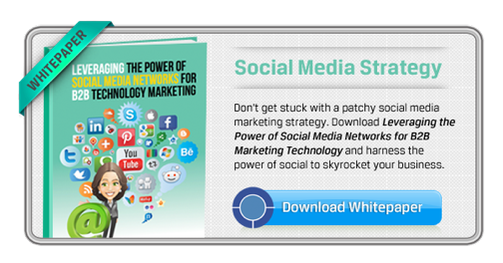 You may not know it just yet, but your social media followers have been checking you out. Well, not you in particular, but your company.
You may not know it just yet, but your social media followers have been checking you out. Well, not you in particular, but your company.
They’ve been commenting on statuses, giving the thumbs up to articles that are being posted, and heck, they’re even sharing these articles with their friends, colleagues, and even complete strangers (you know you have few of those followers on your Twitter feeds).
But are you showing them some love, too? Are you responding to their comments or starting conversations with them, whether those conversations are online or offline? If you are shaking your head no at this point, you are missing out on the love fest.
For social media marketing to hit the right chord with your audience, you can’t forget about the social part. Sharing content isn’t a one-way street. The ability to engage with your readers and followers right then and there is the interaction point that we missed years ago when articles and other pieces of content were static and didn’t elicit real-time discussions.
Now, the exciting thing is that your social media likes, followers, and observers could all become leads in the near future. As leads, they could transform into valuable customers. But to generate qualified leads, you must first establish a social engagement strategy that can be repeatable and sustainable.
Here are a few tips to get the social media party started or better yet, keep the party going:
Tip #1: Like Them Back
How to Spark Social Engagement
A like could be the start of a beautiful partnership. When you actively engage with individuals and companies, there’s a greater chance that they will reciprocate. Social interaction goes both ways and open communication is at the heart of social sharing.
For instance, when a person or organization likes your status – specifically on Facebook or LinkedIn pages – you should be proactive and like their statuses and shares as well. The circulation of likes between both sides is also a great way to boost your content’s visibility between your followers and their followers, especially with future postings.
Turning Likes into Leads
There’s certainly a chance that the individuals or companies that like your statuses could be great prospects, but don’t be hasty in looking at them as qualified lead candidates just yet. Likes are purely the basis for deeper social engagement.
Tip #2: Transform a Comment Into a Conversation
How to Spark Social Engagement
So a person from an organization you could see doing business with has commented on a piece of content you shared. Now what? Respond back and thank that person or entity. Even if their comment isn’t exactly positive, let them know that you appreciate that they took the time to read your work and are considering their point of view.
In addition, you want to respond right after they comment to keep the dialogue fresh and active. Comments are also a great way to show your other followers that you are active and responsive on your pages, which helps encourage them to participate in future dialogue. Ultimately, the more you comment, the more you can connect with your followers as a whole.
Turning Comments Into Leads
A comment can be an invitation to get to know a potential business partner. The great part is that you can get to know them pretty quickly because their profiles are right there in front of you! If these companies represent the target audience you are looking to do with business with, you can either encourage the party to read some of your other content or encourage them to contact you.

Tip #3: Align your Website with your Social Media Pages
How to Sustain Social Engagement
With the conversations and social media interactions bubbling over at a fevered pitch on your Facebook, LinkedIn, and Twitter pages, potential prospects are going to want more information about you and your company. You should keep your social pages optimized to feature key website links, including your main URL, blog URL, and any other handy links to access content (for content repositories, case studies, or news releases, for example).
The best place to host these links is in the “about” or company information sections. That way, your audience can get the information they need without having to leave your pages. By learning more about you, they are more likely to want to keep reading your pages and statuses, share your content, and become true advocates of your company.
Turning Visitors Into Leads
Your website can be a lead-generating engine, as long it is built to grab the attention of the visitors filtering in from your social media pages. Be sure to have your website ready for top, middle, and bottom funnels and build landing pages with forms to attain essential contact information (especially for your more valuable middle and bottom of funnel content). These landing pages should also be informative and engaging with messages that resonate with your prospects.

Strategically placed offers and bold call-to-action buttons are also great points of attraction and conversion on your website. These offers can be placed on your home page for instant visibility. You can also set up these offers on your website through blogs. In fact, with blogs, you can not only get readers to visit your website with a direct link on your social media feeds and pages, but you can also get interested parties to leave their information in the comments section or click through to a built-in landing page.

Once you’ve been able to create an infrastructure to funnel the social media traffic you attract, you can start figuring out how to distinguish between qualified and unqualified leads. Join the TSL Marketing webinar, where we will discuss and divulge agency secrets for how to be effective in the next steps of prospect recognition.
One final thought for B2B marketers: At the end of the day, even if you have your social media pages set up to drive traffic, the content is going to bring followers and interested parties in. Make a good first impression with the content you create. Think about which content is going to compel the audience in the first place based on your buyer personas’ interests and business challenges. For more insight on how to identify your personas and tailor your content appropriately, check our previous blog.

